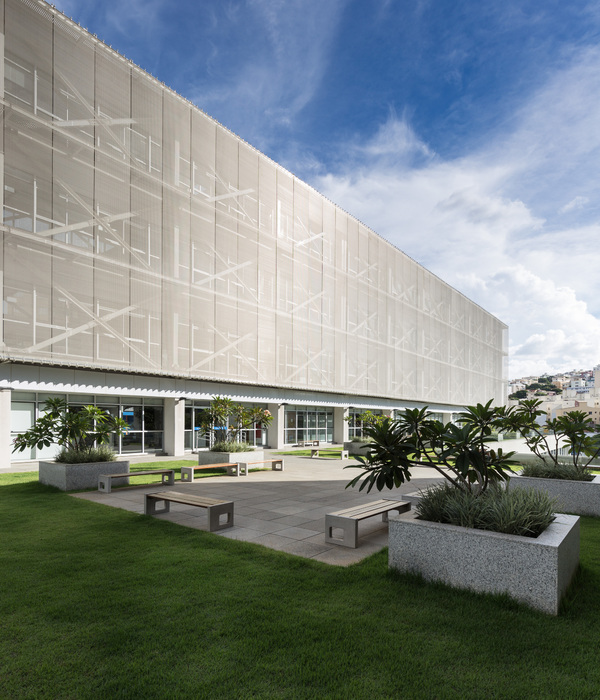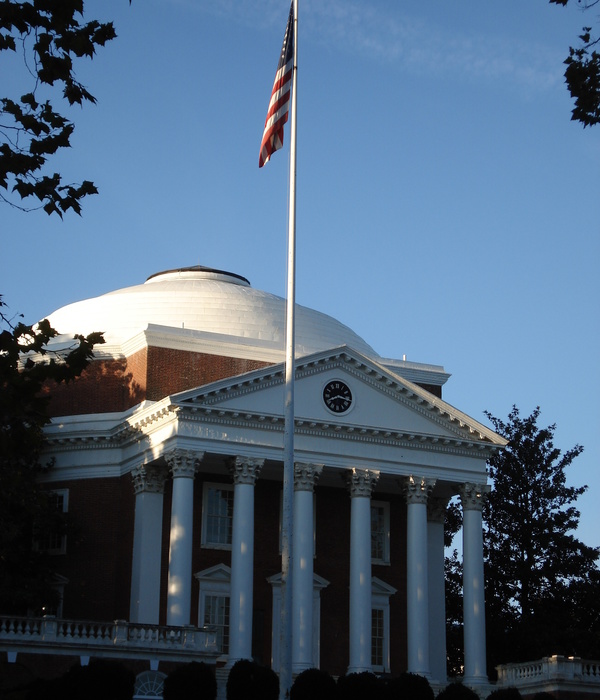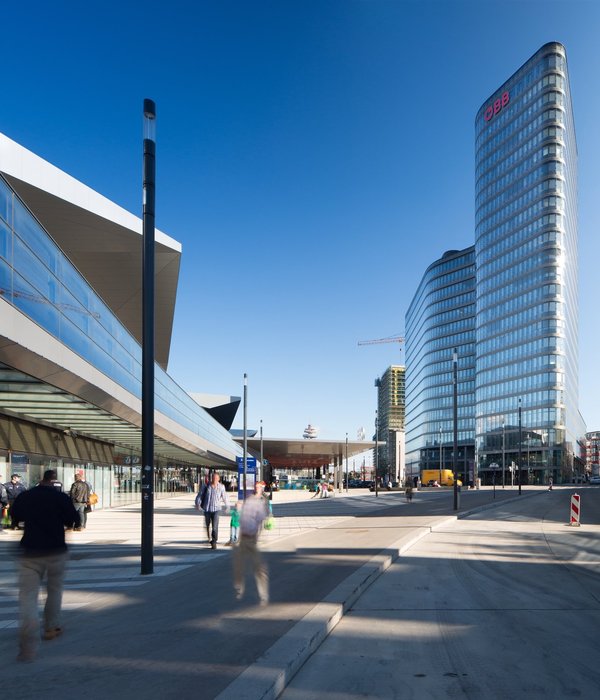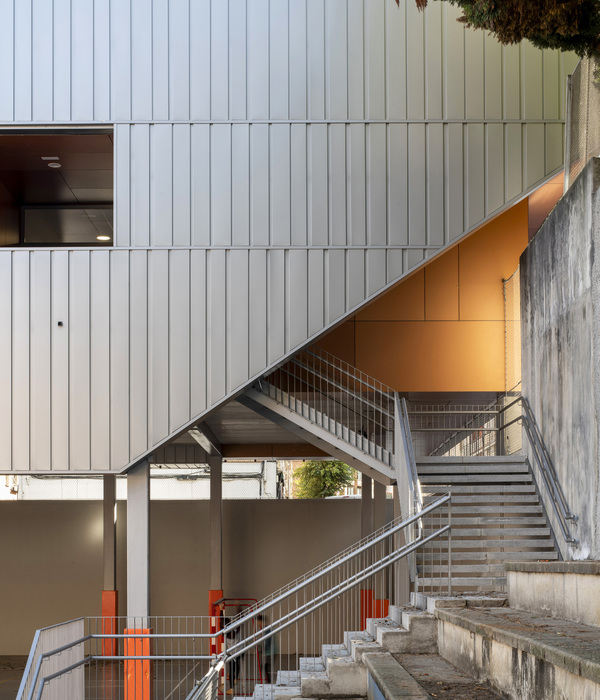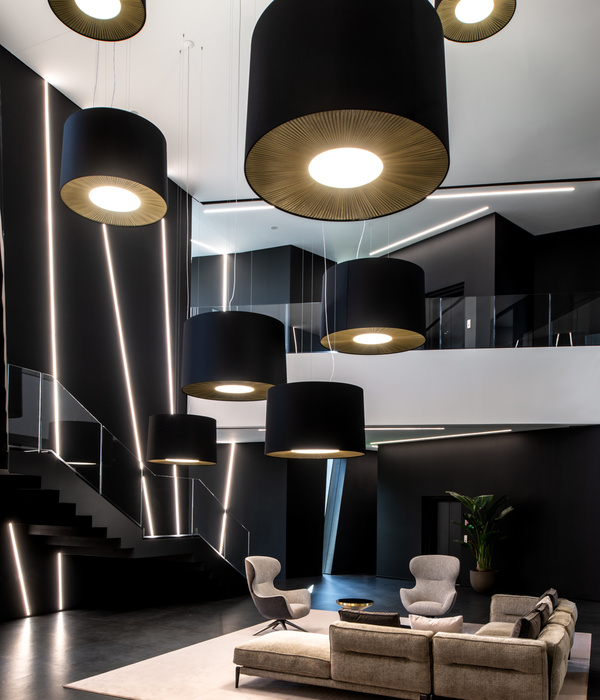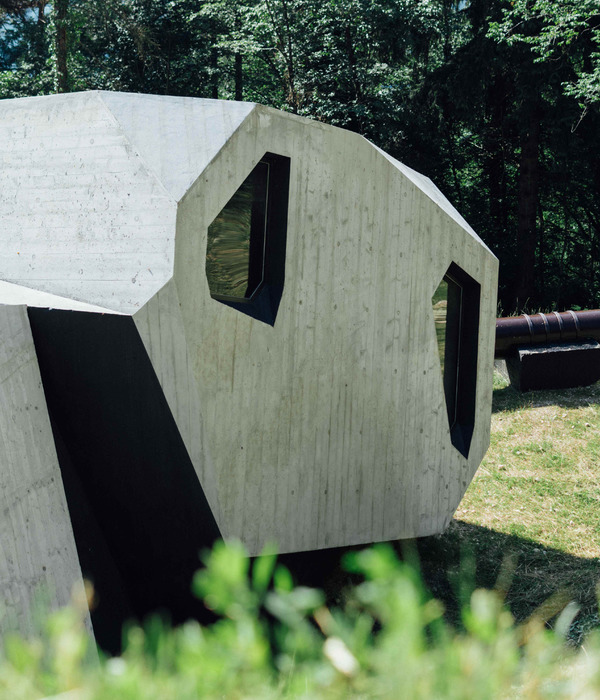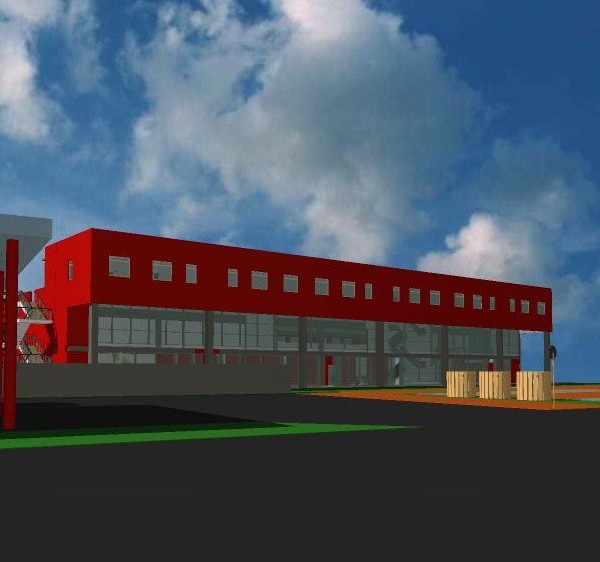在青岛西海岸的唐岛湾畔,TAG·西海美术馆沿海岸线伸展,位于在这片被世界旅游组织称为“中国整个海岸线上资源条件最为优越的海滨旅游度假区”——凤凰岛旅游度假区。
On the bank of Tangdao Bay in Qingdao West Coast New Area, TAG Art Museum extends along the coastline embraced by the Phoenix Island Tourism Resort, which is praised as “a coastal tourism resort with the most superior resources along the whole coastline of China” by World Tourism Organization.
▼视频,Video
TAG·西海美术馆是一家非营利艺术机构,位于国际化综合艺术社区——西海艺术湾(The Artists’Garden)内。美术馆由法国著名建筑师让·努维尔设计,法国景观设计师吉尔·克莱芒共同参与打造,以美术馆建筑与花园呼应社区艺术生态理念,以当代艺术助力城市发展。
TAG Art Museum is a non-profit art institution located in The Artists’ Garden, an international comprehensive art community. The museum, based on the concept of echoing community art ecology with architecture and garden, is designed by Jean Nouvel, a famous French architect, and jointly built by Gilles Clément, a French landscape designer, aiming at helping urban development with contemporary art.
▼西海美术馆鸟瞰,TAG Art Museum – aerial view
美术馆占地面积5837.5平方米,主体建筑17000平方米,12间展厅依海而建。除专业展厅外还包括音乐礼堂、观礼厅和艺术工坊等专属艺术空间,以及TAG·餐、TAG·吧、TAG·商店、TAG·花园、TAG·港等休闲消费空间和会员专享的活动及社交空间。
TAG Art Museum, covering a land area of 5,837.5 square meters, and having a building area of 17,000 square meters, is composed of 12 professional exhibition halls built by the sea, exclusive art spaces such as a music auditorium, a viewing hall and art workshops, leisure consumption spaces such as TAG·Cafe, TAG·Bar, TAG·Store, TAG·Garden and TAG·Port, as well as member-exclusive spaces for activities and social communication.
▼美术馆全景,Overall view
与城市的在地融合
Fusion with the City
考虑青岛城市建筑风貌与特点,TAG·西海美术馆委托欧洲建筑师来延续城市建筑文脉,以建筑的原创性、唯一性和艺术性来表达和强化美术馆的艺术属性。
Considering the style and characteristics of the urban buildings of Qingdao, European architects are entrusted to continue the urban architectural context at the TAG Art Museum, and express and strengthen the artistic attribute of the art museum with originality, uniqueness and artistry of architecture.
▼退潮后在美术馆海滩外赶海的人们,People going for fishery harvest on the beach outside the museum
▼由吉尔克·莱芒设计的景观,Landscape designed by Gilles Clément
让·努维尔在《路易斯安那宣言》中提出“每个建筑是有生命的、唯一的、特殊的,并且要与其周围环境、场所精神和谐共处”。TAG·西海美术馆以在地性为基础,强调联结并充分尊重基地的场所精神,让建筑与人文环境和自然环境充分融合。
In Louisiana Declaration, Jean Nouvel proposes that “every building is alive, unique and special, and should be in harmony with its surroundings and the spirit of the place”. TAG Art Museum, based on the locality, emphasizes the connection and full respect for the spirit of the place, in a bid to fully integrate the architecture with the cultural and natural environment.
▼沿海而建的西海美术馆,The museum lying by the sea
美术馆的12间展厅互相连通又相对独立,形态各异且具包容性,以多样的建筑结构和体量、精巧的光线运用和特有的展陈条件,满足经典及当代艺术作品的展览要求。最大限度地释放策展人的智慧,充分激发艺术家的创作灵感,为公众提供全新的艺术体验和空间感受。形态各异的展厅不是简单的物件拼接,努维尔将对艺术的理解扎根于一种延续性之中,在空间中进行构建。
Its 12 exhibition halls are connected yet relatively independent, showing different forms and inclusiveness. With a variety of architectural structures and volumes, exquisite light application, and unique exhibition conditions, they can satisfy the exhibition of both classical and contemporary art works, enable curators to release their wisdom to the maximum extent, and fully stimulate the creative inspiration of the artists, thus providing the public with fresh artistic experience and spatial feeling. The exhibition halls in various forms are not simply spliced by objects, and Nouvel roots his understanding of art in continuity and constructs it in space.
▼西海美术馆俯瞰,Aerial view
▼美术馆建筑紧邻海岸,View from the seaside
▼西海美术馆入口,Entrance to the museum
光影穿梭中的建筑
Architecture Shuttling between Light and Shadow
为了尽善尽美地呈现每一处细节,美术馆与相关单位做了很多研发试验,仅自主研发系统就达20余项,例如5号展厅的升降天花及外遮阳系统、音乐礼堂的移动声学反射板系统等等。
▼5号展厅的升降天花
The lifting ceiling in No. 5 Exhibition Hall
To present every detail perfectly, TAG Art Museum has done many R&D experiments with relevant institutions, and more than 20 systems have been developed independently, such as the lifting ceiling and exterior shading system of No. 5 Exhibition Hall, and the mobile acoustic reflector system of the music auditorium. Moreover, Nouvel applies a large number of new materials in architecture, to form a unique architectural concept by fully integrating the elements of nature, tradition, modernity and technology.
装配有移动声学反射板的音乐礼堂,The music auditorium with mobile acoustic reflector system
美术馆幕墙使用大面积的阳极氧化铝板。铝板经过阳极氧化后,硬度和耐磨性都会提升,具有良好的耐热性和优良的绝缘性。表面生成的氧化膜具有防护性和装饰性,无油漆覆盖,在突出金属色泽的现代感的同时,能更好地适应海边的气候环境。为了避免色差、提高耐腐蚀度,美术馆幕墙使用的阳极氧化铝全部为从奥地利进口的定制基材。
阳极氧化铝板映照自然环境,Anodized aluminum sheets reflect the natural environment
5号展厅外设电动遮阳百叶,采用16mm超薄不锈钢板龙骨,智能化控制的亮面穿孔阳极氧化遮阳板可以根据展览需求为展厅提供合适的光线条件,固定不锈钢件采用CNC高精级加工而成,能有效控制误差。整座展厅的外遮阳系统可整体控制,亦可单面、单层控制。
▼5号展厅外可灵活调节的电动遮阳百叶
Electric sunshade louvers enclosing No.5 Exhibition Hall
No.5 Exhibition Hall is equipped with electric sunshade louvers, which are formed with 16mm ultra-thin stainless steel plate keels and intelligently controlled perforated anodized sunshade panels with bright surfaces to provide appropriate light conditions for the exhibition hall according to the exhibition requirements. The fixing stainless steel parts are fabricated by means of CNC-controlled high-precision processing technology, which can effectively control the error. The exterior sunshade system of the whole exhibition hall can be controlled either as a whole, or by single-side or single-layer.
▼工人正在安装调试遮阳百叶,Workers
assembling and testing the sunshade louvers
▼5号展厅内部,Interior of No.5 Exhibition Hall
6号展厅“百米长廊”外侧悬有127片1m×5m的阳极氧化铝电动遮阳扇,整个系统亦是首次研发,全球独有。
127 pieces of 1m*5m motorized anodized aluminum sunshade panels are hung outside the “100m gallery” of No. 6 Exhibition Hall. The entire system is developed for the first time, and thus is unique in the world.
▼6号展厅“百米长廊”阳极氧化铝电动遮阳扇,Anodized aluminum sunshade panels hung outside the “100m gallery”
自主研发的阳极氧化铝电动遮阳扇
Thesunshade panels system isdeveloped for the first time
让·努维尔更加关注玻璃的透明或遮蔽所表达的物质与光线之间的关系,超过关注一些形式性的空间参数,他说:“玻璃是一种语言,一种变异材料,这种物质让所有的微妙变化成为可能。”美术馆大量使用超白玻璃,除玻璃门外,所有的玻璃均为四玻两腔。展厅使用的超白玻璃含铁量仅为普通玻璃的1/10甚至更低,单片玻璃透光率达91.5%以上,四玻两腔的透光率达到74%,能最大限度地减弱色彩的视觉偏差,保留室内展品和室外景致的纯正色度。
Jean Nouvel pays more attention to the relationship between objects and light expressed by the transparency or shielding of glass than some formal spatial parameters. He says: “Glass is a language, a variant material, which makes all subtle changes possible.”Ultra white glass is widely used in the art museum. Except for glass doors, all the glass is composed of four panes of glass separated by two cavities. The iron content of ultra white glass used in the exhibition hall is only 1/10 or even lower of that of ordinary glass, making the light transmittance of a single piece of glass being over 91.5%, and that of 4-pane and 2-cavity glass being up to 74%, which can minimize the visual deviation of color, and thus retaining the pure chromaticity of indoor exhibits and outdoor scenery.
透过5号厅的玻璃望向展厅外的海面,Sea view from No.5 Exhibition Hall
光影在建筑材料中的运用被发挥到了极致。各种材质的幕墙构建着真实与虚拟混合的空间影像,建筑表面在光线折返间与蓝天、大海、植物互相交融。从建筑外部看,流云、夕阳、天空以新的角度被复刻,光影交汇间的物象叠错成流动的画面,重新构建平面的空间关系,形成“画中画”的风物意象,将对艺术的感知扩展到另一维度。
The light and shadow in building materials is applied to the extreme. The curtain walls of various materials construct spatial images mixed with reality and virtuality, and the building surfaces blend with the blue sky, sea and plants in between the back-turning light. Seen from the outside of the building, the flowing clouds, sunset and sky are reproduced from a new angle. The objects and images between light and shadow are overlapped into a flowing picture, and the spatial relationship of the plane is reconstructed to form the scenery image of “picture in picture”, which expands the perception of art to another dimension.
▼流云、夕阳、天空以新的角度被复刻
The flowing clouds, sunset and sky are reproduced from a new angle
建筑本身的实体界限在光影的自由表达中被消弥溶解,在整体景观中逐渐透明化,人、建筑与自然的和谐被无限放大。这种“和谐”不仅停留在建筑表面,还通过巧妙设置的开窗和连廊映入建筑内部空间,为观众打开“移步异景”的建筑新体验。
The physical boundary of the building itself is dissolved in the free expression of light and shadow, gradually becoming transparent in the overall landscape. The local harmony between man, architecture and nature is infinitely enlarged. This “harmony” not only stays on the building surface, but also is reflected in the internal space of the building through skillfully set windows and corridors, opening a new architectural experience of “changing sight” for the audience.
▼光影交汇间的物象叠错成流动的画面
The objects and images between light and shadow are overlapped into a flowing picture
内外互动的风景
Landscape of Internal and External Interaction
7号厅和8号厅向海一侧各开4扇窗户,纵横比例和高低位置各不相同,长宽根据中国传统山水画的尺幅比例而定,将窗外唐岛湾的山海一色向观众毫无保留地展开,并通过精巧的窗口角度设计,将远处的景象倒置于眼前,制造出“万花筒”般的视觉体验。窗内设有遮阳帘,在减弱光线的同时营造出朦胧的画意。
▼8号展厅万花筒般的开窗角度设计
The “Kaleidoscope” like visual experience in the No. 8 Hall
▼7号展厅窗外风光,View from No. 7Exhibition Hall
▼夕阳时分的8号展厅,No. 8 Exhibition Hall in the evening
光从3号展厅顶部倾泻而入,清晨的生机、午时的明媚和夕时的温存都落入这方圆形空间。中庭以玻璃围合,与展厅内部并不相通,视线可以穿过植物景观直抵天空,意识在艺术作品与自然背景之间自由流动。
As light pours into the interior from the roof of No. 3 Hall, the vitality in the morning, the brightness in the noon and the warmth in the evening all fall into this circular space. The central atrium is enclosed by glass, which is not connected with the interior of the exhibition hall. The sight of the audience can pass through the plant landscape to the sky, allowing the consciousness to flow freely between the artistic works and the natural background.
▼3号厅中庭以玻璃围合,The atrium of No. 3 Exhibition Hall is enclosed by glass.
▼2号展厅可打开的面海玻璃门,The glazed door facing the sea in No.2 Exhibition Hall
▼6号展厅内部,Interior of No.6 Exhibition Hall
▼9号展厅内部,Interior of No.9 Exhibition Hall
展厅间的连廊多以玻璃围合。在12间丰富有序的展厅间游走,山、海、花园与城市以新的空间组合方式被引入美术馆中,展品、建筑、自然与城市的互动在观赏行进间持续发生,为观众提供观展间隙的思绪沉淀空间。人在空间里移动,光线随时间变化,时空交叠,投下深浅不一的影子,成为一场自然与观者交互的实验艺术。
The corridors between the exhibition halls are mostly enclosed by glass. Walking among the 12 rich and orderly exhibition halls, you will find mountains, sea, gardens and the city are introduced into the art museum through a new space combination. The interaction between exhibits, buildings, nature and city continues during the viewing, providing the audience with a space for precipitation of the mind during viewing intervals. People move in space, and light changes with time. Space and time thus overlap, casting shadows of varying depths, becoming an experimental art of interaction between nature and viewers.
▼展厅间的连廊多以玻璃围合
The corridors between the exhibition halls are mostly enclosed by glass.
▼立面局部,Facade partial view
让·努维尔说:“建筑具有超越的能力,它能够显露地理、历史、色彩、植被、视野和光线。”TAG·西海美术馆,一个让所有感官得以打开的无界场域,亦是一场永不落幕的当代建筑艺术大展。
Jean Nouvel says, “Architecture has the ability of transcendence. It can reveal geography, history, color, vegetation, vision and light.” TAG Art Museum, an unbounded field that allows all senses to be opened, is also an ever-lasting exhibition of contemporary architectural art.
▼环形走廊,The circular corridor
▼美术馆中的走廊及风景,View from the corridors
以艺术社区为依托的美术馆
Art Community-based Art Museum
TAG·西海美术馆的“在地性”理念不仅体现在建筑本身,在运营中也有所创新。注重展览与在地元素的融合,充分发挥青岛海滨城市的资源优势,在展览中引入海洋和环保元素,探索更多与海洋相关的主题,呈现与城市、基地环境密切联系的形式与内容。
The “localization” concept of TAG Art Museum is reflected not only in the building itself, but also in its operation innovation. Laying emphasis on the integration of exhibition and local elements, and giving full play to the resource advantages of coastal city of Qingdao, it introduces marine and environmental protection elements into the exhibition, and explores more marine-related themes, so as to present the forms and content which are closely related to the city and local environment.
▼办公区室外露台,Outdoor terrace for office area
未来,TAG·西海美术馆会以西海艺术湾社区为依托,为聚集艺术资源发挥核心价值。在规划的社区化体系中,艺术酒店、青年旅舍和写生基地、艺术工作室、机构美术馆、艺术机构等板块互相连结,通过独有的驻留空间建立中外艺术家创作交流的学术平台,共同支持美术馆的发展。在这个过程中,逐渐形成较为完整的艺术社区化的体系,也为美术馆未来的发展提供良好的艺术生态基础。
In the future, TAG Art Museum will rely on The Artists’ Garden to play its core value in gathering art resources. In the planned multi-form community system, various parts such as art hotels, youth hostels and sketching bases, art studios, institutional art galleries, and art institutions will be connected with each other to build an academic platform for creation and exchanges between Chinese and foreign artists through a unique resident space, thus jointly supporting the development of the art museum. In this process, a relatively integral art community system is to gradually take shape, which will also provide a good artistic ecological foundation for the future development of the art museum.
▼建设中的西海艺术湾社区鸟瞰,The Artists’ Garden under construction
▼美术馆一层平面图,Plan level 1
▼二层平面图,Plan level 2
▼夹层平面图,Plan level mezzanine
▼美术馆屋顶层平面图,Roof plan
▼东立面,East facade
▼西立面,West facade
纵向剖面图,Longitudinal section
▼剖面图,Sections
项目名称:TAG·西海美术馆
设计方:让·努维尔建筑事务所
公司网站:
info@jeannouvel.fr
项目设计 & 完成年份:2012-2021
主创及设计团队:让·努维尔
项目地址:青岛市西海岸新区银沙滩路1111号
建筑面积:17000平方米
摄影师:黄少丽、晁启轩
客户:山东国际海岸文化产业股份有限公司
Project name: TAG Art Museum
Design: Ateliers Jean Nouvel
Website: info@jeannouvel.fr
Design year & Completion Year: 2012-2021
Leader designer & Team: Jean Nouvel
Project location: 1111 Yinshatan Road, Qindao West Coast New Area
Gross Built Area (square meters): 17000
Photographer: Shaoli Huang, Qixuan Chao
Clients: Shandong International Coast Cultural Industry Co.,Ltd
{{item.text_origin}}


